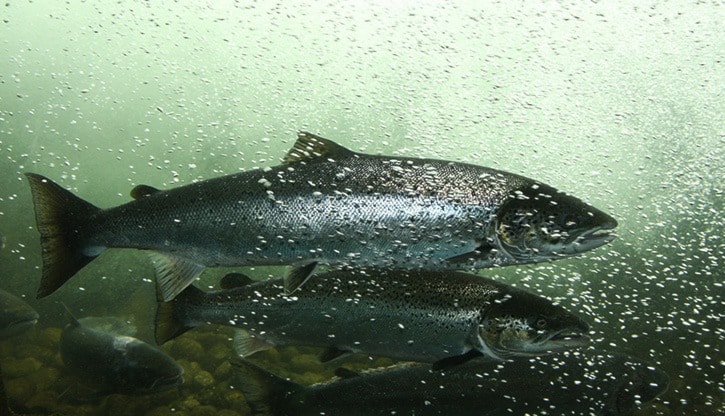Every year since there were mountains, rivers and oceans, salmon have always made their way back from the salty sea to spawn another generation in local streams.
Something’s changed though. Mother Nature’s modus operandi is off its axis, and this year’s abnormally dry summer paints a concerning future for salmon returns across the Island.
As such, the number of drought days has gone from very few to 100-plus every year, a staggering change considering droughts of this size occurred once every 10 years, said Wilf Luedke, chief biologist for stock assessment on the south coast for the Department of Fisheries.
“We wonder, where does it end? The more days of drought we have, the more it changes the ecosystem, stresses the fish out,” Luedke said, adding that while the trend is unfavorable, every year we seem to “dodge the bullet” just in time, such as this year, thanks to a rainy September.
“If this trend continues then we’ll wonder, when does the rain start, are we going to have rain by October, maybe, maybe not? This isn’t a matter that extends into the next five years, but the next 50 years.”
Most vulnerable are coho, which stay in the system for a year as small fish before they go out to sea. If the water level is low and rivers dry up, they get stuck in little pools that can go up to 25 C, which can be lethal. Chinook face a similar risk, especially in systems that don’t have a lake behind them or some kind of weir control, such as Goldstream and Chemainus rivers.
Still, both salmon species are susceptible the same domino effect which stems from drought, lack of food in particular. If a river is dry for a month, all the insect colonies living under the gravel die off, leaving a gap in food supply when the salmon pass through.
Luedke explained that chinook on southern Vancouver Island would be affected in their adult migration depending on when the lay their eggs, which is typically between January and February, then they are out by June or July. With less snowfall and more rain, however, water temperature is warmer, causing the eggs to hatch early and go up to the ocean quicker.
This, in turn, throws off the whole timing process.
“For eons, they [chinook] were supposed to get out of there in May, find the plankton in the ocean, now they’re going out in March,” Luedke said. “Question is: Will there be the same food supply there that they evolved to?”
In the end, Luedke said DFO is working with local groups in the province on how to monitor and manage water supply. The big concern now is over any river that has a flow control, which most of the major rivers on Vancouver Island.
“Water conservation and water management is critical to maintaining the salmon runs,” he said.
Human development, such as logging, has affected salmon returns as well, as clear-cut areas no longer have vegetation to absorb the water, allowing it to travel down into rivers much faster, causing gravel to enter streams, which further disrupts salmon.
Looking at the larger picture, success of salmon runs will vary depending on the community and its location on the Island.
Sooke fisher Ron Neitsch, a fishing charter operator in Sooke for over 20 years, feels this year’s salmon returns were a mixed bag, as chinook returns were quite good, but the coho were not.
“We had decent water levels, Sooke Salmon Enhancement was able to intercept the chinooks on time, there were some that got into higher water before schedule, although it was still very successful with large salmons,” Neitsch said, adding that the local fishing community has seen drier falls than this one.
As for coho, Neitsch said possible reasons why they were less successful is because of a pattern that may had affected its spawn three years ago (since coho are three-year fish) such as floods that may have washed all the eggs away. He added that coho were far less out in the Strait of Juan de Fuca this year as well.
In the end, it still comes down to Mother Nature.
“Unfortunately, through all our wisdom, even with our 20 to 40 years of fishing experience, it’s usually a wait and see thing. Nobody expected this year to be that great for chinooks, yet it was,” Neitsch said.
